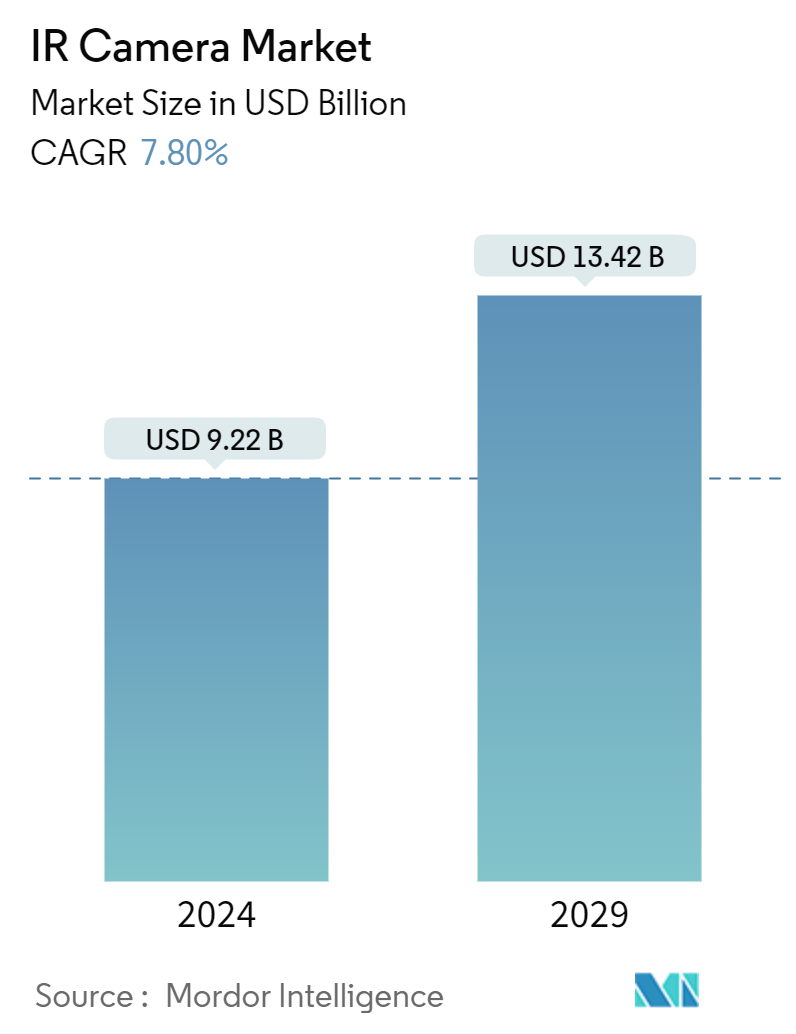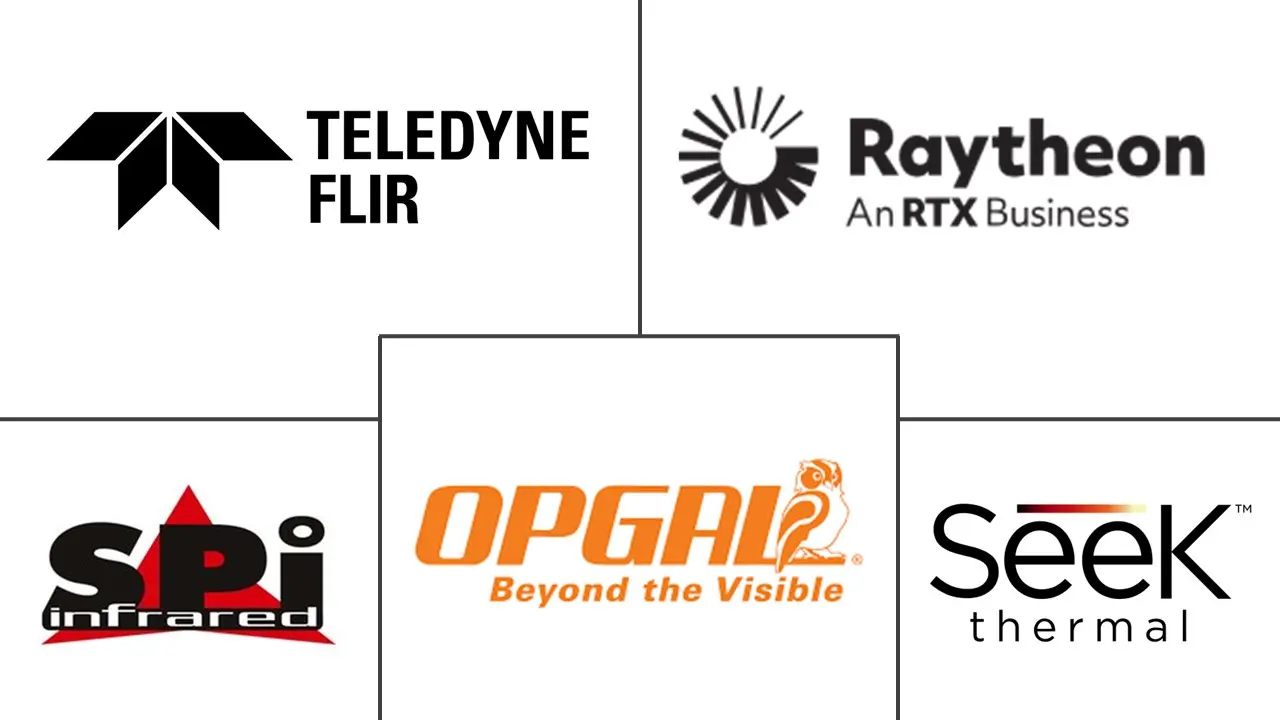Market Size of IR Camera Industry

| Study Period | 2019 - 2029 |
| Market Size (2024) | USD 9.22 Billion |
| Market Size (2029) | USD 13.42 Billion |
| CAGR (2024 - 2029) | 7.80 % |
| Fastest Growing Market | Asia Pacific |
| Largest Market | Asia Pacific |
Major Players
*Disclaimer: Major Players sorted in no particular order |
Need a report that reflects how COVID-19 has impacted this market and its growth?
IR Camera Market Analysis
The IR Camera Market size is estimated at USD 9.22 billion in 2024, and is expected to reach USD 13.42 billion by 2029, growing at a CAGR of 7.80% during the forecast period (2024-2029).
Infrared cameras are widely used for security and surveillance purposes. They can detect movement and capture thermal images even in complete darkness. This makes them suitable for monitoring large areas, identifying intruders, and preventing theft or vandalism.
In addition, these cameras can be integrated with advanced video analytics to enhance threat detection and improve overall security measures. Some security cameras are equipped with smart IR technology. This technology modifies the brightness of the camera's infrared LEDs according to how far away an object is, avoiding the problem of the object being overly bright. It addresses the issue of images being washed out by infrared LEDs when objects are near the camera.
- Infrared cameras play a crucial role in energy audits and efficiency assessments. They allow users to identify areas of heat loss, insulation gaps, and building air leakage. By pinpointing these energy inefficiencies, infrared cameras enable users to make targeted improvements, reducing energy consumption and lowering utility bills. Moreover, these cameras aid in detecting faulty or inefficient equipment early, helping businesses optimize their energy usage.
- Infrared cameras are invaluable tools for preventive maintenance programs. By identifying abnormal heat patterns in electrical systems, mechanical equipment, and rotating machinery, these cameras can help detect potential failures before they occur. This proactive approach allows for timely repairs or replacements, minimizing downtime and preventing costly breakdowns. As a result, businesses can save money and improve overall operational efficiency. Infrared cameras are also extensively used for electrical inspections, as they can quickly identify overheating components and potential fire hazards.
- Infrared cameras have become essential tools for firefighters and rescue teams. These cameras can penetrate smoke and darkness to locate hotspots and identify potential victims during firefighting and search-and-rescue operations. Infrared cameras enhance situational awareness by providing real-time thermal imaging, enabling quicker and more effective response times.
- Infrared cameras have become increasingly popular in various industries due to their ability to capture thermal radiation. These cameras have found applications in fields such as security, building inspections, and even medical diagnostics. However, there are concerns regarding the accuracy of their functionality and the stringent import/export regulations governing their distribution.
- After the COVID-19 pandemic, the automotive sector witnessed an increase in demand as people started to prioritize personal transportation and seek alternatives to public transport. One of the key applications of IR cameras in the automotive sector is in night vision systems. By providing enhanced visibility in low-light conditions, these cameras enable drivers to detect pedestrians, animals, and other potential hazards that may not be visible to the naked eye.
